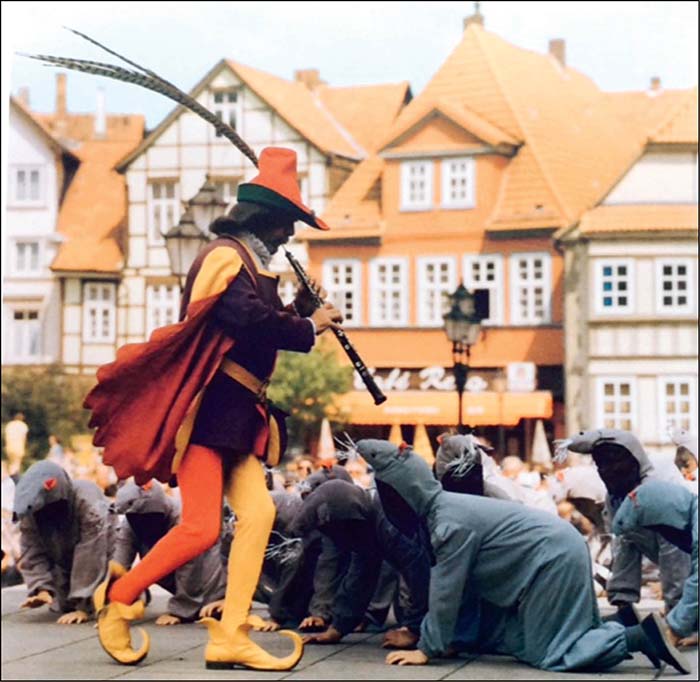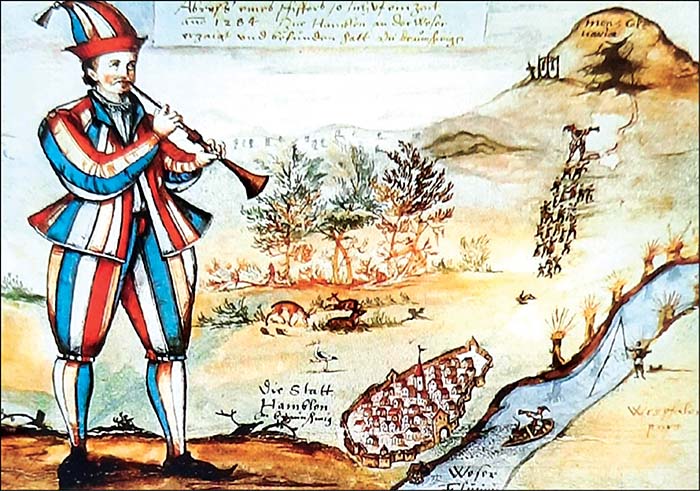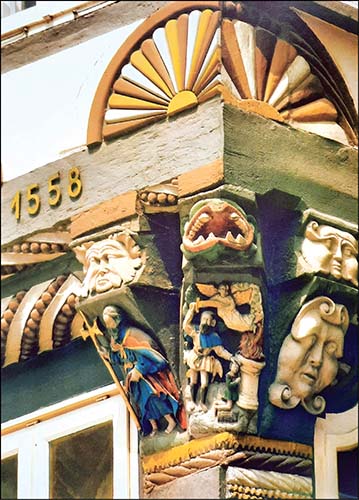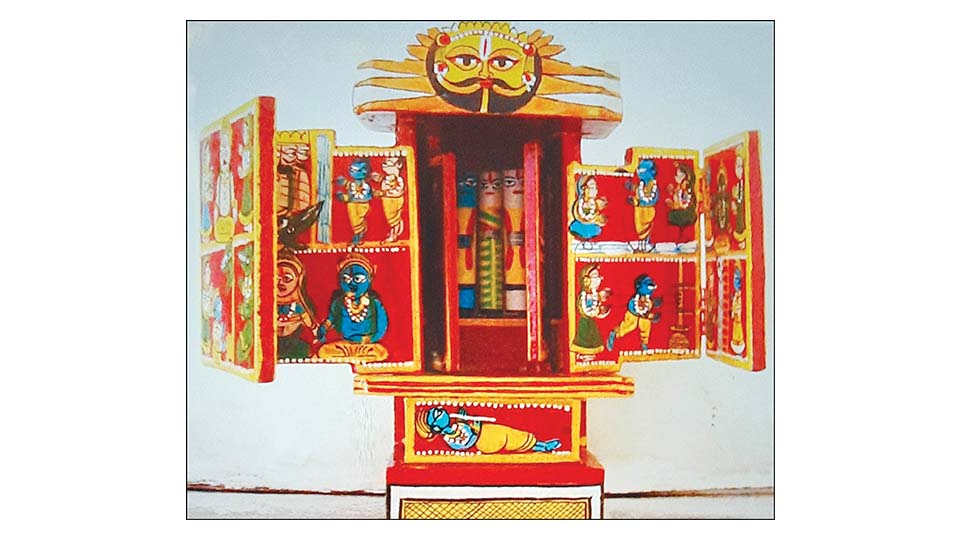LOOKING BACK…By Girija Madhavan
Story-telling is a treasured bond, knitting the family together; familiarity and repetition being the key to success here. A friend’s grandson often asks her to tell him the Kannada story of Punyakoti, the cow that kept her word to the tiger and went back ready to be killed. Small children love simple songs in which they can participate; like the nursery rhyme “Johnny, Johnny Yes Papa!.” They shout out the last “Ha, ha ha!” with all the gusto of their little lungs.
Story-telling, folk art and music are ideal ways of passing on societal wisdom and traditions. “Ajjis” [grandmothers] in joint families would tell children tales handed down in families. At the recent Bangalore Literary Festival, Sudha Murty, author and former Chairperson of the Infosys Foundation, regretted that this custom has now been eroded. Among her many books is one titled “Grandma’s bag of stories.”
Arts like Yakshagana, Sutrada Bombe Aata [puppetry], Thogalu Bombe [shadow puppetry], all strengthen old legends and fables. Rajasthani story-tellers used a Kavad to weave their narratives. A Kavad is a wooden cabinet with folding doors, artistically painted with icons of deities and figures from myths, ensuring the preservation of tales of the past in collective memory.

Recognising the powerful attraction of English nursery rhymes, it has been suggested that alternatives in Kannada and other mother-tongues, should slowly be introduced. Some Telugu-speaking children fulfilled this need by making their own version of “Here we go round the mulberry bush, the mulberry bush, the mulberry bush, so early in the morning.” Holding hands, they danced in a circle, singing “Evarigaru magari pushpa, magari pushpa, magari pushpa.” While the jumble words merely resembled Telugu, the tune and rhythm were the same as the English original.
Not all nursery rhymes or children’s stories have benevolent meanings. “Three blind mice” is a sadistic song. The rhyme “Ring-a-ring of roses”, “Tisshu”, “All Fall Down”, is attributed to the Great Plague of London when people carried little wreaths of herbs and dried flowers to ward off contagion and sneezing could bode a dire malady. Some stories, though celebrated, have an underlying bitter tone, such as the Pied Piper of Hamelin. When I was a child, my Mother spiritedly recited to me Robert Browning’s poem “The Pied Piper of Hamelin.” It impressed me deeply. I was unsure of the setting of the poem. That is, until I went to live in the city of Bonn in Germany.

Hamelin or [Hameln as spelt in German] is about 290 kms from Bonn, quick of access on Germany’s Autobahns. So I made a trip there. Hamelin is in Lower Saxony on the river Weser, the capital of the Hameln-Pyrmont area; famous as the setting of the arcane story of the Pied Piper.
Hamelin is picturesque, living off the legend of the Piper; the frontage is all gables, gargoyles and carefully restored medieval buildings; rat souvenirs are everywhere, even bakeries selling rat shaped wares. In summer, street dramas of the story are enacted by colorfully attired actors.
The legend claims that in the year 1284 AD Hamelin suffered from an infestation of rats. So fierce were they, that Robert Browning describes how “they fought the dogs, killed the cats and bit the babies in the cradles.”
A Piper dressed in a coat of many colours [hence Pied] offered to rid the city of rats for a sum of money which was agreed to. The rats followed the Piper’s mellifluous notes to their deaths in the river. However, the townsfolk refused to pay the Piper his wages. Vengeful, he returned another day, this time the magnetic notes of his pipe drew 130 children of Hamelin, dancing along the town’s main street to a nearby hill. There a magic cavern opened in the hillside into which the Piper and the children disappeared, never to be seen again. Only one little boy is said to have been left behind, wistful at not being able to enter the wondrous cave with his quicker paced companions.

As for the authenticity of the story, a stained glass window is said to have recorded this tale in a Hamelin church of 1300 AD but it was later destroyed. The “Luenburg Manuscript” of 1440/50 AD, grimly notes how on the day of the Saints John and Paul, the 26th of June, 1284, a hundred and thirty children of Hamelin were “seduced and lost at the place of execution at Koppen.” A hundred years later another manuscript also marks the loss of the children of Hamelin on that date. There does not appear to be any record of rats infesting the town.
For the suspenseful end, Magic is one explanation, the story being a fairy tale. Other suggestions are that the children were part of a migration to Transylvania or were inducted into monasteries. As a fable or parable it may have been used to convey a Moral message; of the obligation to keep a promise. As a story for children however, it is chilling with its inexplicable ending.
Hamelin still marks how the town’s children of yore were lost many centuries ago. Festive music and drumming are not allowed on the road they last traversed. The magic and mystery of the Pied Piper’s persona along with the sinister menace of the tale, are kept alive in Hamelin.








Girija Madhavan completely misses the superb poem of Kuvmpu: ” Boomanahalliya Kindari Jogi”, which Mysore primary school children read, and sung in the class in 1950s. It was written based on the story of the Pied Piper of Hamelin, but in a different setting in an Indian village, written a simplistic and yet powerful entertaining imagery of mice taking over the village life, superbly crafted by Kuvempu, which all of us in those days sung in the class and enjoyed there after reciting it countless times.
The joy of getting educated in Kannada in primary and middle school years in those days, include the savouring of gems such as the above, as well as DVG’s ” Vanasuma”. Both lyrical in different superb ways. one entertaining take over of mice, and the other clothed in easily fathomable philosophy.
I guess Girija Madhavan missed this pleasure, perhaps, having been educated in English during her earlier years. What a great loss!!
I had been to Hamelin a short distance from Hanover in Germany, and the spirit of this story, a legend , is alive although in a subtle sense. The people of this Town are aware of visitors looking for the signs of the legend, and quietly appreciate their visit. Like all other towns in Germany, Hamelin has subtle beauty of its own. One can see how this Pied Piper legend could have emerged there.
It is nonsensical to bring in Sudha Murthy here.
I would salute the genius of Kuvempu, who could pen with such ease : Boomanahalliya Kindari Jogi” as well as the more scholarly “Sri Ramayana Darshana”. I can still rejoice murmuring the above Kuvempu’s poem , as well as DVG’s ” Vanasuma” while I do the DIY work around home, here in the West!
So, this is one of Girija Madhavan’s self-directed attention seeking article. Yes, she has said her husband was India’s ambassador to Germany at Bonn-the capital at the time of the Cold Wat when Germany was divided.
I too had been to Hamelin, easy trip from Hanover. The town folks know the legend of the Pied Piper, so too was my son born, brought up and educated in Europe. But everything is low key, very Germanic in character even when Pied Piper events are held. A distinction from the more tourist-grabbing events that US towns/cities or even Indian towns/cities, put forward.
Unnecessary distractions of Yaksha Gana, and of course Sudha Murty, who should be mentioned compulsorily it appears. What a nonsensical digression!
Yes, I too enjoyed Kuvempu’s Bommanahalliya Kindari Jogi, poem, crafted superbly with wit, and lyrical so that we primary children recited and enjoyed it.
Agree.
The joy of raising children in Europe, is their exposure in their earlier years, the stories of Piped Piper of Hamelin and the Hunchback of Notre Dame, and the pleasure of taking them to visit places like Hamelin in Germany, and Notre Dame Cathedral in Paris. Later years to the cultural capitals like Rome, to view the Sistine Chapel roof painting of Michelangelo. These sound esoteric ,but then they are as important for them, as the use of IPads, through which they learn more.
Girija Madhavan has been a Keralite, educated in English, and unlikely to be fluent in Kannada, and unlikely to know Kuvempu.
These people grow up, get educated in Mysore and never learn the local language. Only in Karnataka.
Yes, attention-seeking article, the Pied Piper is used as a reason to self-publicise about her stay in Germany.
Girija Madhavan has been a Keralite, educated in English, and unlikely to be fluent in Kannada, and unlikely to know Kuvempu.
These people grow up, get educated in Mysore and never learn the local language. Only in Karnataka.
Yes, attention-seeking article, the Pied Piper is used as a reason to self-publicise about her stay in Germany.